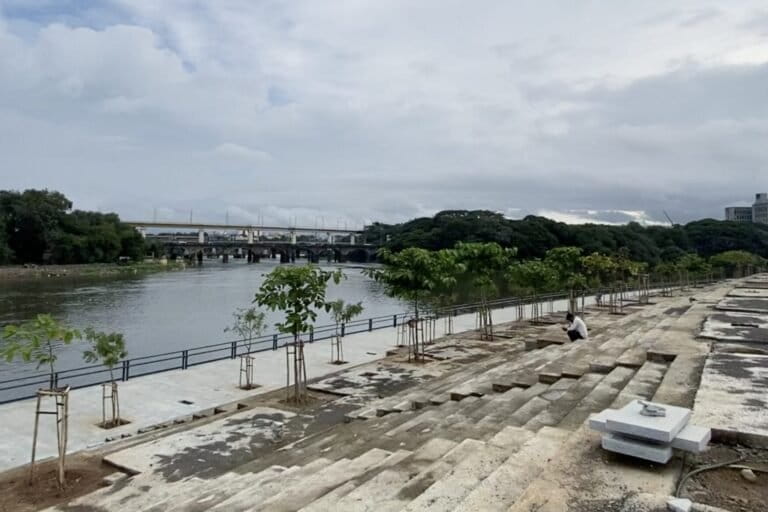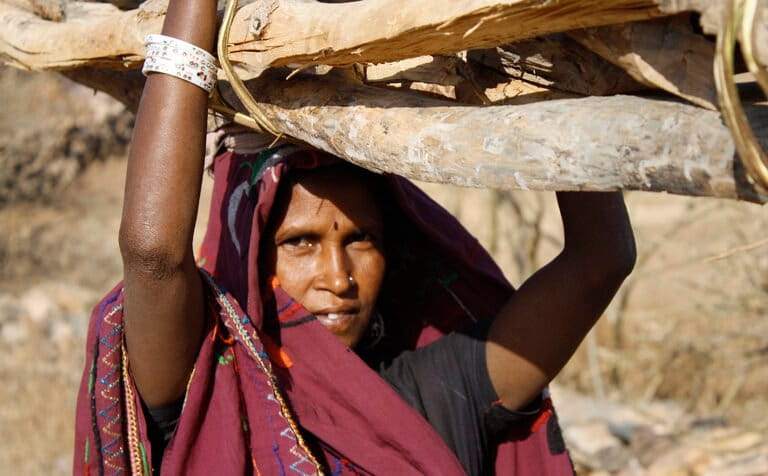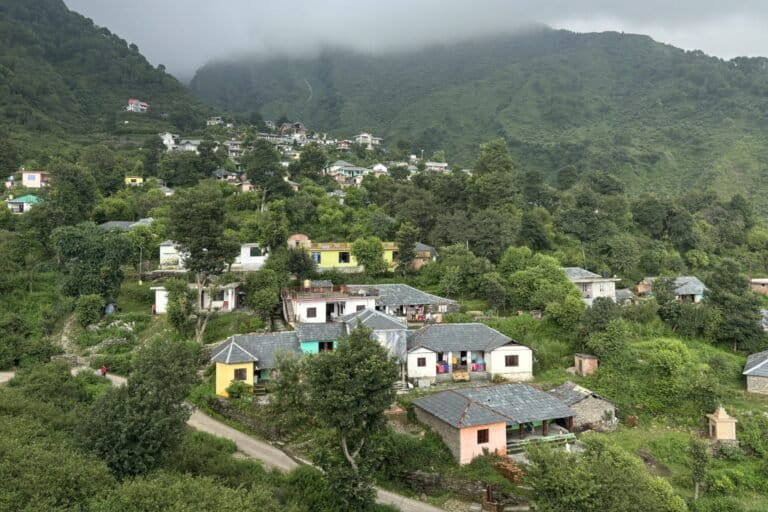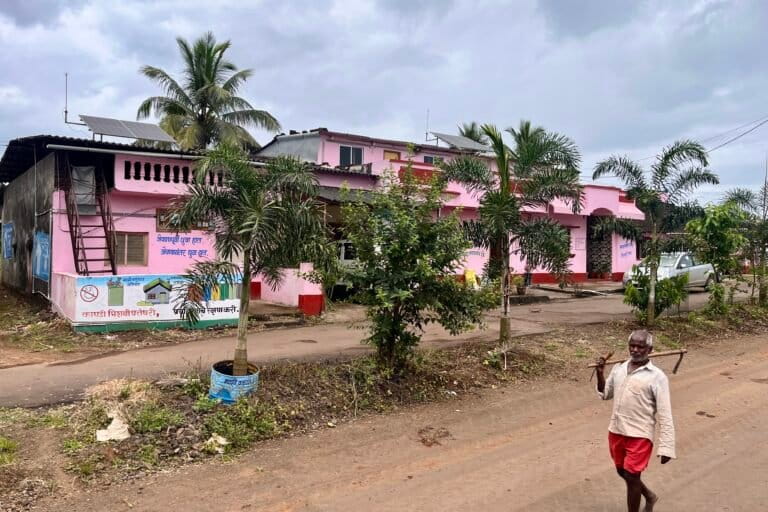- Karnataka’s iron ore-rich Ballari district has been through various phases of mining activity, which, over the years has taken a toll on the environment, jobs and people’s health in the region.
- Farmlands have become infertile and health troubles are common among people living in the regions near mines.
- The transitions in the mining industry in Ballari have not matched the rehabilitation process of the environment and people in the region, which still awaits the promised development.
“During my childhood, Sandur was very beautiful, it was filled with lush green forests. We were happily doing agriculture. No one thought about going to cities to earn a living. But now, even though there are many mining companies, there are no employment opportunities for our people, and they are moving from one place to another in search of employment,” said Chandrashekar Meti, a resident of Sandur area in Karnataka’s Ballari district.
Ballari, a remote district in northeastern Karnataka known for lush green landscapes, became popular for iron ore extraction in the mid-2000s when the demand increased ahead of the 2008 Beijing Olympics. Iron ore from here was being exported to meet these demands. This brought private players into the mining industry. Sandur area of Ballari is the main hub of iron ore extraction in the state.
“This was the time when many people, including farmers, leased their lands to mining companies as it resulted in huge profits,” Meti, who is also the state committee member of the All India United Trade Union Centre (AIUTUC), told Mongabay-India.
But, in 2011, the Supreme Court banned iron ore mining in the region. The apex court was also very critical about illegal mining after Karnataka’s then Lokayukta (state level anti-corruption authority), Santosh Hegde’s report shed light on the issue. Hegde’s report showed how mining companies made high-profit margins, yet didn’t pay any royalties to the government, leading to large-scale corruption.
The production of about 25 million tonnes of steel and a third of the iron ore produced in India was affected by the apex court’s judgement. The Lokayukta report had said that 3.31 metric tonne of illicit iron ore was exported from 2006-2010. It had noted that under the garb of issuing temporary transportation permits to lift and transport iron ore, large scale illegal mining activity was being allowed to be carried out for a certain period, even in the forest areas.
H.M. Shivanandaiah, a resident of Shro Gangalapur village in Ballari said that the area used to be prosperous for farmers, but once mining started, everything went downhill. “Our land has lost its ability to produce crops because of the accumulation of dust and the environmental impact of mining. It has been more than 10 years now since the government had promised to develop these areas with the reclamation and rehabilitation (R&R) funds, but no proper development has been carried out till now,” Shivanandaiah told Mongabay-India.
While talking about the health conditions of the residents, he pointed out that many people suffer from respiratory problems, lung infections and tuberculosis and for treatment, they are forced to go to an expensive private hospital in Toranagallu as the nearest government hospital is about 50 kilometres away.
Even after mining was stopped in 2011, the impacts of it on the environment and people have continued over the years. Some mines restarted between 2012 and 2014. But the transition of Sandur over the years has not been to the benefit of the local ecology and residents. The hope of rehabilitation also remains dim. As of last year, funds collected from mining auctions and companies, for reclamation and rehabilitation, had not yet been put in use.
Read more: Choking the fields: Impact of mining on Goa’s paddy
Impact on local ecology and air quality
A study in 2012 in Sandur, Ballari, a year after mining was banned, revealed that mining activities there led to the removal of all vegetation and thereby fauna; topography and land scenarios have changed owing to the digging of open-pits and dumping of overburden rock mass affects the surrounding areas. The study also shows that dust deposited on the crop results in poor growth.
Sanna Mareppa, a Hosapete-based (in Ballari) social worker, explained to Mongabay-India that before he leased his land for mining in 2007, he used to grow maize and paddy in the fields. But after his land was returned to him he discovered that it had lost its ability to grow crops. He said that mining companies didn’t even level the dug-up land before handing it back.

Chandrashekar Meti of AIUTUC stressed that the mining companies are obligated to rehabilitate and restore the land after mining, but no company works towards restoring the land. He said that if a company is mining and cutting trees in a particular place, the company has to plant the same number of saplings in another place, but most of the companies have refused to plant and maintain saplings.
Even though the area receives good rainfall, farmers don’t get their expected yield because the dust accumulated on crops results in stunted plant growth and decreased productivity, Meti said.
Rudra Gowda, a farmer from Shro Basapura village in Sandur, said that this year, in September 2020 the maize production was satisfactory, but he has recently sowed chilli and onion now and worries that the dust pollution from November to February would affect the yield. “The dust situation is so bad that when we go to extract honey from the honeycomb, dust is present in it. The major pollution is from a private factory nearby since it is not only involved mining but also produces steel, cement and other products,” he added.
Read more: Kolar Gold fields: From fields of gold to a dust bowl
An air quality assessment conducted in Sandur, studying distribution of dust particles from 2000 to 2010, showed the size of particulate matter (dust) ranging from 0.1 μm to 0.58 μm (1 metre=10,00,000 μm) with the dust particles covering the entire area.
Social worker Sanna Mareppa said that owing to mining and the transportation of iron ore, a lot of dust pollution can be seen in many areas in Sandur, Hosapete, Toranagallu, Halakundi and Rayapura of Ballari district. He said it has led to a rise in serious health problems such as tuberculosis, silicosis, asthma, respiratory problems and eye-related problems.
He alleged that while big mining companies are employing people from other states and earning huge profits it is the locals who are suffering from severe respiratory diseases and struggling to meet their basic needs.
Read more: [Video] Is mining in India ‘just’ for the environment and communities?
The wait for ‘development’ continues
Following the 2011 ban, some mining companies were allowed to restart in 2014. But the locals complain that the government had ordered the mining companies to follow rules and guidelines to minimise negative impacts on the surroundings, but most of the companies defy those laws.
Chandrashekar Meti said this is because there is no proper supervision and government officials only look at it as an opportunity to generate more revenue and totally neglect the repercussions that it can have on the environment and people.
“After the Supreme Court banned illegal mines, the employees who worked in mines lost their jobs. Some even went to court to claim settlement from the mining companies, but they weren’t successful. Many people are now working as daily wage labourers, farmers and other temporary workers to earn their living,” he said.
“People are living in blue tents near Hosapete and they are suffering from dust pollution every day with serious respiratory diseases. The production of mining has increased, more mining companies have now come, but there is no employment for the people in Ballari, and this is the sad reality,” he added.

T.M. Shivakumar, an advocate and the state committee member of the Samaj Parivartana Samudaya, a Karnataka-based NGO, said that the Central Empowered Committee (CEC) had issued guidelines for the resumption of mining activities in the state. The mines were distinguished as A, B and C category by the CEC, with C-category mines being the ones where almost all the rules and regulations were violated and so their mining operations were stopped by the Supreme Court. The B-category was given to mines which had minor violations and A-category was given to mines which had no violations, he said.
“The CEC had stated that the mining companies have to minimise the environmental impact by planting saplings near the mining areas and to restore the land after the mining is done and the air and water pollution should also be taken care of by the mining companies, but these guidelines are not followed by almost all the mining companies,” Shivakumar told Mongabay-India.
The former district collector of Ballari, Ram Prasath Manohar had submitted a reclamation and rehabilitation plan worth Rs. 200 billion (Rs 20,000 crores) to the Karnataka Mining Environment Restoration Corporation (KMERC) which so far has not been able to convince the apex court about it.
As of November 2019, about Rs. 250 billion (Rs. 25,000 crores) has been collected from mining auctions and companies (in Ballari, Tumakuru and Chitradurga district) but nothing has been put into use.
Read more: [Photos] Suffering in the town powering India’s nuclear dreams
(The author is a staff reporter with 101Reporters.com, a pan-India network of grassroots reporters.)
Banner image: A picture of the iron ore mines in Ballari district. Photo by Ambrish B.













